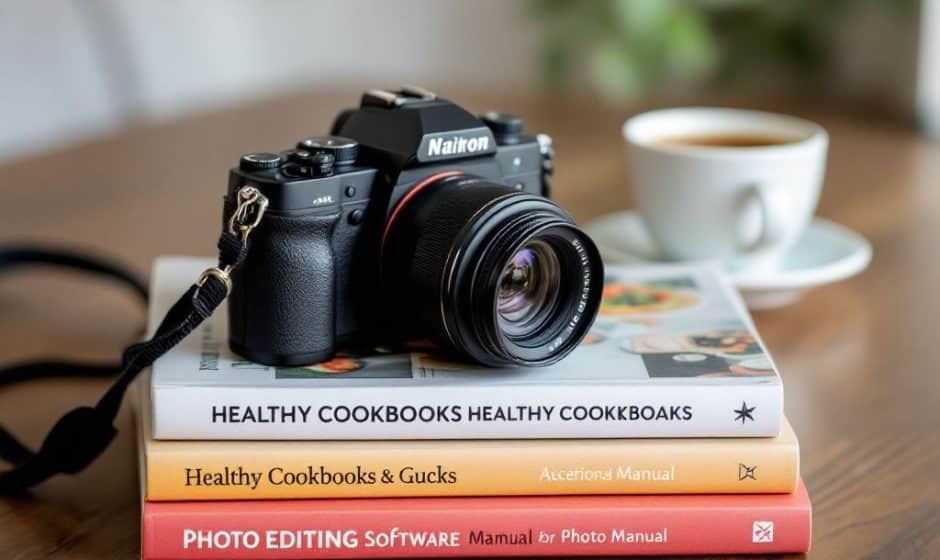So, imagine this: you’re in the middle of editing a stunning portrait. The colors are vibrant, the composition is flawless, and the exposure is just spot on. Everything seems perfect, but there’s an undercurrent—you feel tired, irritable, and somehow your creativity is hitting a wall. Sounds familiar?
For photographers, sustaining creativity in their work while maintaining overall health is crucial. Yet, a seldom-discussed factor that could hold the key to peak performance in creative professions like photography is hormone regulation. Let’s dive into how mastering this can revolutionize your work and well-being.
Understanding Hormone Imbalance in Creative Work
Alright, first things first. Let’s chat about what an imbalance looks like. Your hormones—those tiny, mighty messengers—play a colossal role in regulating mood, energy levels, and you guessed it, creativity. An imbalance can result in fatigue, brain fog, and even a dip in enthusiasm for your work. While many artists experience ups and downs, if your lows are affecting work, hormone imbalance might be playing a covert role.
Secondary keywords like “creative work health” swing naturally into this conversation because managing hormones is, at the core, about keeping yourself healthy and creatively engaged.
Signs Your Creativity Might Be Affected by Hormone Issues
Okay, let’s diagnose a little. Here are a few indicators that whisper (or sometimes shout) that hormones might be mucking around with your photography groove:
- Fatigue and Low Energy: You sleep, but you wake up already dreaming of a nap.
- Mood Swings and Irritability: One minute you’re euphoric about your latest shoot, the next, you’re questioning your career choice.
- Trouble Concentrating: That fuzzy feeling when editing images and failing to notice glaring flaws.
- Lack of Motivation: Projects sitting on your desk way past the deadline out of plain ol’ disinterest.
Noticing any of these symptoms consistently? It might be time to give your hormones some attention.

How Hormone Regulation Impacts Photography
Let’s shine a lens on the impact good hormonal balance can have. When hormones are in harmony, your focus sharpens; creativity flows like water, and stress bounces off you like rain on a perfectly oiled umbrella. In the fast-paced, highly detailed world of photography, stable hormones can provide that extra edge, elevating your art and effectiveness.
This is because hormones like cortisol, serotonin, and dopamine—the triad of well-being—directly influence stress response, happiness, and alertness. Get these under control and watch your photography magically become less stressful and more fulfilling.
Steps to Balance Hormones For a Healthier Creative Practice
So, how do we go from haphazard hormonal chaos to zen-like balance? Here, you’ll find some real, down-to-earth strategies that can make a difference. Trust me on this one, give these a try the next time your creativity takes a dip:
Eat a Balanced Diet
Adopting a balanced diet isn’t just health advice cliché; it’s integral to stabilizing hormones. Focus on:
- Protein: Stick to lean meats, fish, eggs, and a delightful array of plant-based proteins. Proteins help the body produce amino acids, essential for hormone production.
- Healthy Fats: Incorporate avocados, nuts, seeds, and olive oil to keep inflammation at bay and support hormonal synthesis.
- High-Fiber Vegetables: Vegetables like broccoli, leafy greens, and beans aid in hormone detoxification.
Nutrition plays into overall “creative work health,” because a nourished body fuels an inspired mind. If you’ve never believed this to be true, wait till you try it.
Prioritize Sleep

Seriously, I can’t stress this enough—get some decent shut-eye. Sound sleep is pivotal for hormone regulation. While late-night editing marathons sound productive, they disrupt the delicate balance of restorative sleep and hormonal health. Set a consistent sleep schedule and stick to it like glue.
Manage Stress Levels
Implement stress-relief techniques like mindfulness, deep breathing, or even simple stretching exercises. Maybe between shoots, sneak in a mini-meditation session or, at the very least, some quiet reflection time. Your hormones will appreciate the periodic calm.
Exercise Regularly
Get moving! Whether it’s dancing, yoga, or a simple brisk walk—get that heart pumping. Exercise releases endorphins, which boost mood and energy, tilting your hormonal scales in the right direction. Choose something you love doing so you’ll stick with it.
Stay Hydrated
Water—plain, simple, and powerful. Dehydration can lead to stress, impacting hormone production and balance. Hydrated photographers often find that their stamina and concentration are noticeably better.
Natural Supplements and Herbs
Some natural supplements like Omega-3 fatty acids, magnesium, and vitamin D can be great allies in keeping those hormones in check. Similarly, herbal teas like chamomile or mint may take the edge off a hectic day. Of course, always consult with a healthcare provider before starting any new supplement regimen.
Structuring Your Day to Support Hormonal Wellness

Why not take things up a notch? Establishing day-to-day routines can help stabilize hormone balance, reinforcing these habits in your creative practice:
- Morning Routine: Start your day with a nutrient-rich breakfast and some light exercise. Consider this your pre-editing ritual to kickstart productivity and ease you into creative mode.
- Work Blocks: Use time blocks for focused work, interspersed with short breaks. Use these to stretch or step out for fresh air, maintaining an ongoing reset for your mind and hormones.
- Evening Unwind: Set a calming evening routine. Perhaps put your camera down an hour before bed and engage in a non-screen activity (hello, bookworms!) to encourage optimal melatonin production.
The simplicity in routine offers enormous rewards in terms of creative output and maintaining equilibrium for hormone health.
Common Mistakes Photographers Make
Experiencing hormonal disruption is quite common, even among seasoned photographers. Some common traps include:
- Ignoring Physical Health: Many focus on creative output at the expense of basic physical needs.
- Erratic Schedules: Inconsistent sleep, meals, and rest perpetuate hormonal imbalance.
- Pretending Problem Isn’t There: Often, creatives don’t connect irritability or fatigue to possible biological causes, overlooking hormone regulation.
Awareness is key. Recognize the overlap between creative fulfillment and physical health to adapt habits that both sustain your art and invigorate your mind and body.
Final Thoughts: Your Creative Power Station
Photography is as cerebral as it is visual, requiring sustained focus, creativity, and physical endurance. Mastering hormone regulation is like charging your creative power station—a core element for any vibrant photographer. By nurturing balance within biology, photographers can reach their creative peaks more steadily and enjoyably than ever before.
Photography is a journey—some parts technical, others deeply personal. Understand and respect the rhythms unique to your health and work, and you’ll find your community, clients, and inner artist noticing the incredible difference. So next time you pick up your camera, remember: a balanced filter looks good not just on photos, but on hormone health, too. Happy snapping!
Frequently Asked Questions
What is the hormonal system and how does it work?
The hormonal system, also known as the endocrine system, is a network of glands and organs that produce hormones. These hormones regulate various body functions, including metabolism, growth, bone and muscle health, heart function, and sexual development. When a hormone is released from a gland, it travels through the blood to reach its target cells[1][4].
How are hormone levels regulated in the body?
Hormone levels are primarily controlled through negative feedback mechanisms. For example, when the levels of certain hormones, such as thyroid hormones (T3 and T4), rise, they inhibit the release of the hormones that stimulated their production, creating a feedback loop that maintains hormonal balance[4].
What are the signs and symptoms of a hormonal imbalance?
A hormonal imbalance can cause a variety of symptoms, including irritability and fatigue, mood swings and depression, skin dryness, water retention and weight gain, osteoporosis and joint pain, decreased libido, insomnia, and memory issues. These symptoms can arise from natural life changes like puberty, pregnancy, perimenopause, and menopause, or from other medical conditions[5].
How can hormonal imbalances be treated?
Hormonal imbalances can be treated with hormone replacement therapy (HRT), which includes systemic hormone therapy, low-dose vaginal products, and bioidentical hormone replacement therapy. These treatments aim to restore stable hormone levels, improving symptoms such as sleep, energy, mood, and skin health. The choice of therapy depends on the individual’s specific needs and is typically guided by a healthcare provider[2][5].
References



